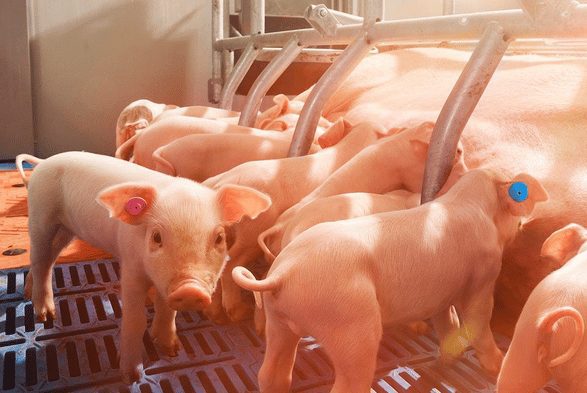Source: Jackeline Hornstra, Pig Progress, 19 May 2021, photo credit: National Hog Farmer
Much attention is paid these days to the correct sow nutrition strategies during gestation and lactation. Yet what about hormonal levels, especially during the transition phase? In these phases of life, they play a pivotal role. As hormones are derived from nutrients, these components should not be forgotten.
The life of modern hyperprolific sows is much like running a marathon. They give birth to a large number of piglets and have to produce enough colostrum to give them a vital life start. A farrowing duration with ten- to 20-minute intervals between piglets is considered to be physiologically normal and is crucial to ensure that piglets are born alive and are vital at birth. Hormones, as well as nutrients, are known to play a critical role in regulating body functions during the transition period. For sows to win the farrowing marathon, a comprehensive nutritional approach is necessary, taking hormones into account.
For the gestating sow, the change from gestation to lactation is a major transition. For that to happen, a series of co-ordinated hormonal signals are given to the brain and several organs to prepare the sow for her new production state. The changes in hormones occur in the last week of gestation, a few days before farrowing.
Oestrogens, oxytocin and prolactin are key hormones that act and interact to prepare the sow’s body to give birth, express nesting and maternal behaviour and to produce colostrum and milk. For these hormones to increase as farrowing approaches, progesterone, “the pregnancy hormone”, must decline (Figure 1).
Read more
The South African Pork Producers’ Organisation (SAPPO) coordinates industry interventions and collaboratively manages risks in the value chain to enable the sustainability and profitability of pork producers in South Africa.







